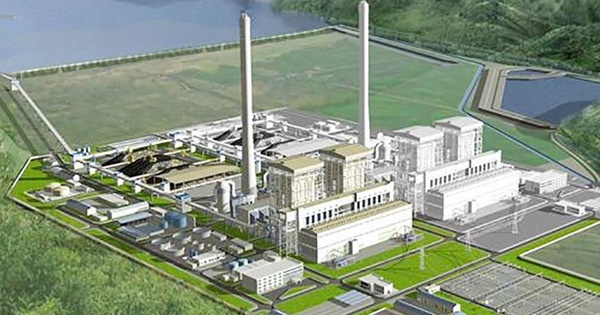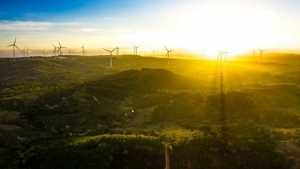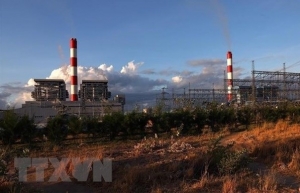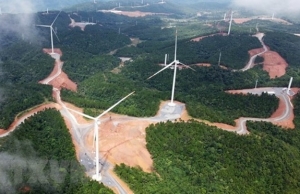New power generation sources proves scant
In light of Decision 2976/QD-BCT dated December 30, 2022 approving Vietnam’s power system supply and operation plan in 2023, of nearly 4,300MW of new power sources be supplemented to the power grid in the new year, there are only two large-scale power plants: Thai Binh II thermos-power plant encompassing two turbines with a combined capacity of 1,200MW and BOT Van Phong thermos-power plant encompassing two turbines with a combined capacity reaching 1,432MW.
 |
| More power plants are expected to come on stream to feed the country's burgeoning power demands |
The remainder are mostly hydropower plants with a combined capacity of nearly 1,700MW, and one waste-to-power plant with 30MW annual capacity.
In 2022, out of 3,407MW of new power sources to be added throughout the year, there were just three coal-fired power turbine groups with a total combined capacity approximating 2,000MW, the remainder are all small to medium-size hydropower plants.
The power sources structure reflects lack of diversity at new power generation projects, with a large proportion of power to be mobilised from hydropower plants.
| Currently, about 4,500MW in the national power system is sourced from small-size hydropower plants, yet raising power from this source is very erratic due to weather conditions. |
Currently, about 4,500MW in the national power system is sourced from small-size hydropower plants, yet raising power from this source is very erratic due to weather conditions.
One surprising point is that according to the power operation plan for 2020 to 2023, there are no new power sources to be expedited by state-owned power authority Electricity of Vietnam (EVN).
This would pose a threat to the system as currently EVN is deemed the key player in ensuring continuous power supply in the country.
Another concern is that despite high hope placed on the part of equity capital and foreign investment sources, no positive signs are in place for a string of such projects that had their investment proposals approved years ago to get off the drawing board.
For instance, despite receiving its investment licence back in January 2020 the LNG Bac Lieu gas-fired power project has faced many bottlenecks during the negotiation process. Though relevant proposals have been sent to the PM’s special task force years ago, no remedy is on the horizon.
Similarly, the LNG Nhon Trach 3&4 combined-cycle power projects have also yet to find a way out of power purchase agreement negotiations.
LNG Bac Lieu, LNG Nhon Trach 3&4 are some of a total 16 LNG power projects with a combined capacity reaching 23,900MW in the Power Development Plans VII (PDP 7) and amended PDP 7 that have faced impediments in power purchase agreement and capital arrangement negotiation.
 | Renewable energy sources not fully tapped: experts The potential of renewable energy sources, especially wind and solar power, is one of the keys to Vietnam’s energy transformation towards carbon neutrality, but barriers stemming from the unresponsive transmission network and pricing mechanism is wasting the capacity of billions of kWh of electricity, according to experts. |
 | Coal shortages require Vietnam to diversify supply sources Vietnam is now in need of diversifying energy supply sources as it is facing a shortage of coal supply for electricity, cement, and fertiliser production due to impacts of the COVID-19 pandemic and the Russia - Ukraine conflict. |
 | Quang Tri province prioritises investment in wind power to diversify energy sources The central province of Quang Tri is striving to attract investment in the field of renewable energy, especially wind power, to turn the locality into an energy hub by 2030. |
What the stars mean:
★ Poor ★ ★ Promising ★★★ Good ★★★★ Very good ★★★★★ Exceptional
Related Contents
Latest News
More News
- EVN launches major power infrastructure projects nationwide (December 19, 2025 | 18:17)
- VAL inaugurates second production line to meet domestic animal feed demand (December 19, 2025 | 16:37)
- Sun Group pioneers urban tram system in Phu Quoc (December 19, 2025 | 15:00)
- Seven major projects launched to drive Hanoi’s next growth phase (December 19, 2025 | 14:00)
- Securing capital and efficiency for Vietnam’s 2026-2030 growth ambitions (December 17, 2025 | 10:00)
- Vietnam bucking trend in the global M&A landscape (December 16, 2025 | 14:20)
- HDS Summit spotlights Vietnam’s rising role in regional supply chains (December 16, 2025 | 08:00)
- Kolon signs $48 million airbag supply deal with Autoliv (December 15, 2025 | 18:14)
- National Assembly approves Vinh–Thanh Thuy expressway project (December 15, 2025 | 18:02)
- Quang Tri green-lights $1.59 billion LNG-fired power project (December 15, 2025 | 17:59)

 Tag:
Tag:




























 Mobile Version
Mobile Version